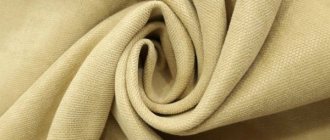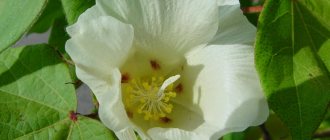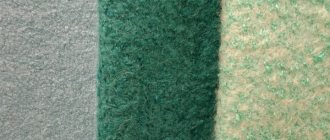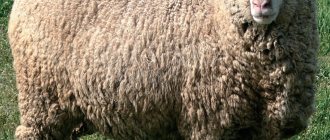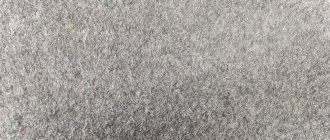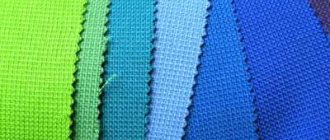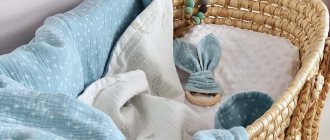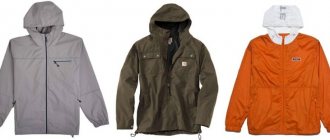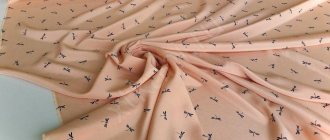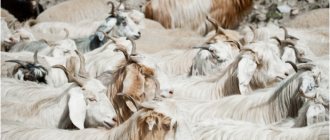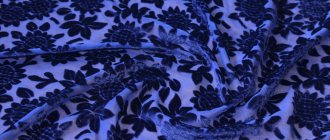The coarse fabric made from thick natural fibers was originally intended for sewing ship sails. That is why it received the corresponding name in Russian. Almost every consumer knows what canvas is. Today, technical canvases are used for various purposes, including interior decoration.
Fabric type
Canvas is a fabric made from natural yarn created by plain weaving. It is rough and dense to the touch. Fabric without impregnation has a gray or beige tint (with impregnation - greenish). The canvas itself is durable and unpretentious, does not stain and does not deteriorate after washing, but in modern production synthetic fabrics are added to it for various purposes. This spoils the quality of the material.
The secret of the strength of natural (harsh) canvas is that when weaving, the threads are placed perpendicularly and very close to each other.
Application
Canvas is used both in its pure form (harsh) and with impregnations.
Industry
Due to its many positive properties, canvas is used in many industries - agriculture, metallurgy, construction, and defense.
It retains its properties under almost any external influence, so it is used for sewing workwear that protects from water, fire, wind and cold temperatures. Fire-resistant canvas is used to make suits for firefighters and stuntmen, as well as gloves that protect against metal splashes and sparks. It is also good protection against any mechanical damage - sharp edges of parts, tools, so overalls, trousers, suits, and raincoats are sewn from it.
Waxed fabric is what you need to make durable tents, bags, awnings, awnings and covers for equipment.
This fabric is still used to make sails, as it can withstand high mechanical loads and is resistant to sea water, precipitation and sunlight. For such fabrics, combined impregnation is used.
Cloth
Since the 60s of the last century, casual clothing made of canvas has been in great demand. It is also used to make fashionable jackets, trousers and overalls for every day, sports shoes and equipment (backpacks, bags, protection for elbows and knees).
Travel and sports bags made from this fabric are highly durable, durable and easy to care for.
Canvas shoes are especially valued in the summer when it's hot. It breathes well and is easy to combine with any type of clothing.
Curtains
Curtains are made from canvas for rooms that need protection from dust, cold, moisture, and sunlight. These could be warehouses, workshops, car washes.
Since the fabric is heavy, it is equipped with metal eyelets (rings that are pressed into specially made holes at the top of the fabric). A steel guide is threaded through the rings, they slide along it and protect the fabric from abrasion. The fabric can be treated with various protective compounds depending on the intended operating conditions.
Also, with the help of such curtains, workplaces are organized in industrial premises - they are used as partitions. In order to prevent cold from entering the room (or retaining heat inside), canvas curtains can be insulated on one side with padding polyester.
Curtains made of thin canvas are sewn for residential premises, for example, for living rooms and bedrooms with interiors in popular ethnic and eco-styles.
We recommend
When sewing curtains and other textiles from thin untreated canvas yourself, you should take into account that the fabric shrinks during the first wash.
Painting
Canvases are also used in painting to create oil paintings. The first painting on canvas was painted at the beginning of the 15th century. At first linen canvas was used, then cotton. Before starting work, the canvas is impregnated with a primer.
Canvas canvas is valued for its availability, low price, and variety of sizes, and artists can use it to create paintings of various sizes - from miniatures to huge sizes.
Sport
Read about: what is plush: its features and characteristics.
Sportswear is made from canvas for some sports - judo, wrestling. Tarpaulin is used to cover wooden canoes. This fabric is also indispensable for the manufacture of trampolines and sports equipment.
Origin story
The word "canvas" has Greek roots. In ancient times, the material was made mainly from hemp. In Rus' (our word “canvas” is from Greek), the name was due to the fact that sails were sewn from fabric - an important material for the state after the opening of new sea routes and the strengthening of the role of the fleet. In the 15th century, the importance intensified - at this time, flotillas plied the seas and were more important than ground forces.
The manufacturing method has not changed over the centuries - it is laying thick threads on top of each other, thanks to this technology it is difficult to tear the material.
Advantages and disadvantages
Like any textile material, canvas has its pros and cons.
Among the advantages, it is worth noting the following properties:
- strength;
- natural composition;
- resistance to mechanical stress;
- no rustling of products made from this fabric;
- protection from overheating, moisture, wind, fire;
- low price.
Among the disadvantages, you need to consider the following qualities:
- high weight - canvas products are heavy;
- large items are difficult to wash and dry due to their high water resistance;
- the material is difficult to sew on your own due to its considerable thickness;
- the fabric does not tolerate low temperatures.
Fabric composition and properties
Hemp, flax, and jute are used to create canvas. There is also semi-linen canvas - a combination of linen and cotton. When synthetic fabrics and materials are added, the characteristics of the material change (often for the worse).
Density ranges from 300 to 600 g/m2, and color - from gray and beige to protective and green (after impregnation).
Properties of the fabric: durable, dense, protected from water and wind, but breathable (this is important for clothing), not subject to temperature changes, does not burn well, and its price is low. Even with a knife it is difficult to pierce it through.
However, canvas (without impregnation) is heavy, takes a long time to dry, and can rot.
Marking and decoding
To indicate the impregnations used in fabrics that meet the requirements of GOST 15530 - 93, the following markings are used:
- OP - fireproof impregnation.
- VO - water-repellent.
- SKPV - Light-resistant Combined with Increased Water Resistance.
- SCOP - Light-resistant Combined with Increased Fire Resistance.
There is a tarpaulin marking based on density:
| Designation | Density, g/m2 |
| 11135OP | 380±20 |
| 11255OP | 430 — 460 ±25 |
| 11255VO | 380 to 400 ± 30 |
| 11293OP | 480 – 500 ± 35 |
| 11293SKPV | 420 – 450 ± 30 |
| 11292OP | 530 – 540 ± 40 |
| 11292SKPV | 450 – 520 ± 35 |
| 11252OP | 600 – 650 ± 25 |
| 11252SKPV | 580 – 620 ± 40 |
| 11252SKPV U, where “U” is improved | 620 – 640 ± 40 |
| 11252SKPV UU | 640 – 680 ± 40 |
Types of fabric
Canvas options
Canvas is made from the following natural raw materials:
- linen;
- hemp;
- jute (mined in Asia, America and Africa);
- linen and cotton.
Canvas comes with impregnation (tarpaulin) and without. Tarpaulin has become widespread - there are tents made from it, technical clothing and shoes. Covers that do not get wet are also made of canvas.
Density levels:
- 11252 skpv - light-resistant, waterproof, bioresistant impregnation;
- 11293 skpv - has the same characteristics, lower density;
- 11293 op - with fire-resistant treatment;
- 11135 op - the same characteristics, lower density.
Tarpaulin
Strength and wear resistance: an overview of the properties of tarpaulin fabric
more details
Characteristics
To have an idea of the technical properties of canvas, you need to familiarize yourself with the readings given in the table:
| Characteristics | Indicators |
| Raw material type | Natural plant origin |
| Raw materials used | Hemp fiber, flax, cotton, jute |
| Weaving method | Simple (linen) |
| Density, g/m2 | 315 – 680 |
| Standard width of canvases, cm. | 92 |
| Water resistance | High |
| Hygroscopicity,% | 1 – 5 |
| Moisture absorption rate | Minimum |
| Strength | Maximum high |
Open to see the entire table
| Air exchange | Low |
| Vapor permeability | Small |
| Electrification | Moderate |
| Side | Double-faced canvases |
| Dyeing method | Plain dyed plain fabric |
| Manufacturer | Russia |
| Standardization | GOST 15530 – 93 |
| Price | Low, from 98 rub. for 1 meter |
How much does the fabric sell for?
On average: 70-250 rubles per linear meter. Look at the article number to understand what the canvas is made of and the presence of impregnation. The price may depend on various factors: for example, canvas made of cotton and jute can cost 170-220 rubles per meter. White furniture is the most expensive (more than 600 rubles per meter). Fabrics made from jute and synthetic fibers are less durable than those made from other raw materials.
Canvas today has not lost its relevance and amazes with its properties. This durable material can last a long time as clothing, shoes or a tent. The potential is enormous, but often during production they replace flax with fragile jute and add synthetic fabrics. At various times, canvas has inspired trendsetters (Levi Strauss made jeans in 1850).
Some fashion designers are trying to come up with new ways to make this material fashionable, such as creating jackets, vests and shoes. Some handmade craftsmen and seamstresses use this fabric for their orders and achieve high quality items.
What is sewn from canvas?
Tarpaulin and canvas are used to make the following products:
- work clothes with protective properties;
- army ammunition (duffel bags, backpacks, tents, awnings, covers);
- sail;
- fire hoses;
- summer and sports shoes;
- tourist and sports equipment;
- thick fabric is used to make protective curtains;
- curtains made of thin canvas, as an item of interior decor;
- canvases for painting (for oil);
- sports equipment, canoe covers, trampolines.
Purpose
Canvas is not only a material for sailboats. It is made from:
- fire hoses;
- backpacks, tents;
- awnings, bags, as well as covers and awnings for military equipment;
- overalls for a number of professions, among the main ones: stuntmen, firefighters, welders, sailors;
- trampolines;
- canvases for artists;
- canoe cover.
Curtains are made from dense material to protect from light, moisture, cold and dust. They are used in car washes, warehouses, and workshops. They are used as partitions when organizing workplaces. Thin, lighter canvas is used to make curtains for residential premises decorated in eco- or ethnic style.
Breathable canvas is used to produce sportswear, in particular for karate and judo. Summer shoes are made from canvas.
Advantages
The advantages of the material are determined by the scope of its application. Let's name the main ones:
- any canvas fabric, no matter linen or any other, durable, dense, resistant to mechanical damage, in particular, tears;
- thanks to special impregnations, it will not get wet, rot, or ignite for years even in the event of a fire;
- does not require complex maintenance, serves reliably, maintaining its original condition without wearing out for a long time;
- designed for extreme temperature conditions, immune to temperature changes;
- allows air to pass through well and, conversely, does not allow water to pass through;
- As a rule, it is made from 100% plant materials, environmentally friendly and hygienic.
Care
Caring for canvas products is easy, as the canvas is easy to wash and does not shrink. They dry quickly without forming creases. If necessary, they can be ironed. They can be vacuumed or dry brushed periodically. Stains can be removed using a sponge and soap solution.
Before using fashionable shoes with canvas uppers, they must be additionally treated with water-repellent agents. You need to clean it with a brush.
Popular and in demand since ancient times, canvas fabric has not lost its relevance in our time. This is a strong, reliable and durable fabric, without which almost no area of human life can do.
© 2021 textiletrend.ru
How to sew a sail
It will not be possible to briefly describe the sewing procedure, but we can give some practical tips:
- The material must be purchased with a reserve for seams.
- Before sewing, you need to make a full size pattern. To do this, it is worth drawing the expected type of sail on the wooden floor.
- The most difficult to make is a quadrangular sail, and the simplest is a triangular one.
- After cutting, it will be possible to lay out the material and cut it, taking into account all the subtleties and highlighting the important points of the finished item.
Sequence of markings for sewing sails.
The procedure for sewing a sail is not simple. There are many subtleties in it that only specialists know about, so you should still entrust this work to a master.
Distinctive properties of tarpaulin
- Wear resistance. This is a feature of technical fabric in which its fibers and threads are exposed to various external factors during prolonged use. That is, tarpaulin fabric is resistant to various mechanical damage (compression, stretching, torsion, friction, bending, dry cleaning, washing, and so on).
- Reliability, strength and durability.
- Breathability. This distinctive ability allows the fabric to pass air under the influence of its pressure. Also, thanks to this property, an optimal microclimate is created.
- Low hygroscopicity. This means that the fabric does not absorb water vapor and moisture from the air. This distinctive property ensures that moisture and vapors do not reach those materials that are stored in tarpaulin fabric.
- High material density. Thanks to this property, the tarpaulin is tear resistant.
The constituent elements of tarpaulin fabric are cotton and linen; jute can be used as the main additive. Different manufacturers make the material in different ratios of cotton and linen. It should also be noted that tarpaulin fabric can be made from 100% linen or cotton. Making canvas canvas opens up very wide possibilities in its use. And in order to improve the consumer properties of the material, special impregnations are applied to it.
